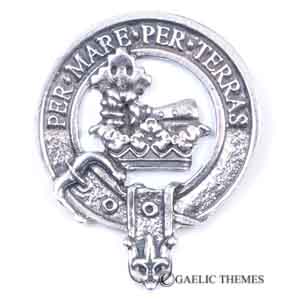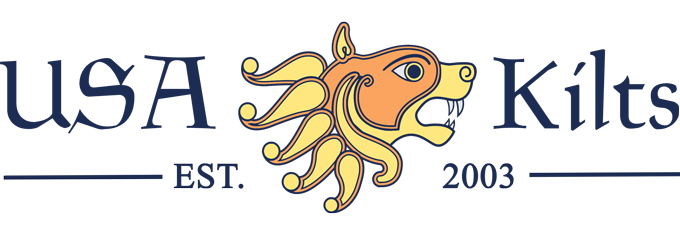MacDonald
Select
- Design: Standard
- Clan Motto: Per mare per terras (By Sea And By Land)
- Notes:
Crest: On a crest coronet Or, a hand in armour fessways couped at the elbow Proper holding a cross crosslet fitchée Gules
Perhaps the most powerful of clans, the original Clan Donald is descended from one Donald of Islay. Donald was the successor of Reginald (Ranald), son of Somerled, named Lord of the Isles in 1207.
Somerled had spent over forty years building up his holdings and even married the daughter of Olav the Red, the Norse king of Man and the Isles. (this story is part of the origins of Clan Macintyre)
Somerled’s de facto kingdom stretched from Bute to Ardnamurchan and included Lorne, Argyll and Kintyre on the mainland.
When Somerled died, his heirs divided the holdings and established great clans. Dugall took Lorne, Mull, and Jura (founding the Macdougalls). Angus took Bute, Arran and Garmoran -- these passed through his heiress, Jane, to Clan Stewart. Reginald gained Islay and Kintyre, which passed to his son Donald.
Donald was a fierce warrior who defended his family’s vast holdings by any means. Towards the end of his life, he embarked on a pilgrimage to Rome to atone for his sins. He died sometime around 1269 and was succeeded by Angus Mor. Angus’s son, Angus Og, was a supporter of Robert the Bruce and led his clansmen at Bannockburn in 1314. Og had two sons; John, later Lord of the Isles, and Iain, whose descendants were the Macdonalds (Maciains) of Glencoe.
In 1386, John’s son Donald inherited the Lordship. He attempted to claim the earldom of Ross through his wife, Margaret. However, this led only to the bloody battle of Harlaw in 1411. After his defeat at Harlaw, Donald returned to his island. His son, Alexander, was more successful and reasserted the family claim to the Ross earldom.
Alexander’s son, John, Earl of Ross and Lord of the Isles, witnessed the peak of Macdonald power. However, he also undid the work of his forebearers when he entered an alliance with the English king, Henry VII in 1462. John hoped to overthrow King James IV, and would swear fealty to Henry if the revolt succeeded. James was too quick -- he invaded the Isles and stripped John of all his titles in May 1493.
Various attempts were made over the next two generations to revive the lordship, but all failed. The Scottish Crown in time offered charters and recognition of their separate holdings to the branches of the Donald family -- a strategy to keep the clan divided and too weak to revolt again.
There were many claims to the high chiefship over the years. In the late seventeenth century, Hugh Macdonald of Sleat on Skye was recognized by the Privy Council as Laird of Macdonald. At first the lairds were created baronets. In 1776, they were also named Lords Macdonald in the Irish peerage. The third Lord Macdonald sought to split the chiefship with the peerage from the house and baronetcy of Sleat. This was accomplished in 1847.
In 1947 the long-running structural dispute was resolved when the then chief was recognized by Lord Lyon as Lord Macdonald, High Chief of Clan Donald. Under him are recognized the chiefs of Sleat, Clanranald, Glengarry and Keppoch. The present seat of Clan Donald is Armadale Castle on Skye.
